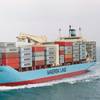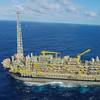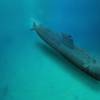By Charley Havnen
The loss of the world’s largest floating deepwater production platform, Petrobras’ P-36, last month off the coast of Brazil with the loss of 10 men will reverberate throughout the oil industry for years to come. We do not yet know what happened to the unit other than that there were reported to be three separate explosions after which the unit took on severe list of about 24 degrees and sank several days later. Was the unit unsafe? Was it operated improperly? We do not yet know the answers and may never know all the answers.
Here in the U.S., the USCG continues to go forward with the regulatory project that would modify the rules on the US Outer Continental Shelf (OCS). This rewrite of the OCS rules was proposed in December 1999 and is probably another year away from the next publication either as another proposed rule or as interim regulations.
There is something missing from the proposed rules published. Licensed manning standards are not included.
There are no US manning regulations concerning how to man these deepwater production units. Clearly, the UCSG has the authority under the Outer Continental Shelf Lands Act amendments of 1978 to develop these regulations. It could be said that the law requires the USCG to develop manning regulations.
The Eighth CG District in New Orleans within whose jurisdiction most of the US deepwater development projects take place has stepped forward and developed manning requirements that fill the needs of safety and the industry without being onerous.
As might be expected, the manning system is an out growth of the existing regulations applicable to Mobile Offshore Drilling Units (MODUs) but takes into account that the deepwater development projects are not outgrowths of the drilling industry but rather are outgrowths of the offshore oil production industry (of which the drilling industry is a subset).
The manning policy stems from over ten years of deepwater development work and culminates in an 8th District Policy letter 03-2000, ch-1, dated October 20, 2000. This letter is available on line under Policy Letters at www.uscg.mil/d8/Divs/M/CCGD8M.HTM.
The manning scheme requires that units be staffed with Offshore Installation Managers (OIMs) (equivalent to a ship’s Master), Barge Supervisor (BS) (equivalent to Chief Mate), and two Ballast Control Operators (BCOs) (equivalent to 3rd Mates), as well as a number of professional unlicensed personnel.
These deepwater units are generally divided into two categories: Those with active ballast systems and those with passive ballast systems. A unit with an active ballast system is typically column stabilized and semi-submersible. The stability (weights and moments) on these units must be monitored very closely at all times and ballast shifted, added or discharged on a regular basis to maintain the unit within the proper stability operating window. On the other hand on a spar unit, which is basically a large vertical cylinder, it is not necessary for stability purposes to continually adjust the ballast condition because of shift in weights and changing moments. This type unit is typically said to have a passive ballast system.
The USCG manning system recognizes that there are varying design philosophies offshore and that deepwater units with passive ballast systems need not necessarily have as many licensed personnel as those with active ballast systems, wherein stability is a much more critical issue.
The manning system also takes into account that the old requirement for Able Bodied (AB) Seamen and Ordinary Seamen (OS) for vessels that do not navigate lacks rational justification. The USCG allows that personnel who have received formal training in firefighting may be substituted for the two ABs and one OS. This requirement seems to be particularly insightful.
The policy also provides that licensed personnel on board the unit who have been formally trained concerning lifesaving equipment and are familiar with all lifesaving equipment on board are authorized to act as lifeboatman in place of those personnel who have lifeboatman endorsed upon their Merchant Mariners Document (MMD).
These licensed individuals must not be from among those licenses that are required to be onboard the unit. They must be extra licensed personnel. We believe that everyone would agree that personnel with deepwater OIM, BS or BCO licenses are more familiar with the deepwater production unit environment than would be someone who had sailed on ships for some years and had earned a lifeboatman endorsement on their MMD.
One might well ask what all of this manning has to do with the loss of the P-36. The answer is that the licensing and manning system used in the US, albeit regional policy rather than federal regulations, goes a long way toward preventing casualties such as the P-36.
The current policy does a great deal to build on the strong points of the deepwater oil production industry and helps to avoid the pitfalls of mandating that they use personnel not fully expert in the offshore production environment.
It appears that the USCG is on the right track in developing personnel capable of avoiding tragedies like what happened to the P-36.
The next step in US development is the use of Floating Production Storage and Offloading facilities (FPSOs). While these units are used world wide and have been used in the US, they are not currently authorized. The Mineral Management Service is at a critical juncture approaching an authorization to move forward with US FPSO development. We will continue to watch this evolution with great interest.
Charley Havnen is a Commander USCG Ret. His organization can help you with your vessel construction project, regulatory problems, vessel manning issues, procedure manuals, accident analysis or expert witness. His organization can do what you can’t or don’t want to do. He can be reached by contacting the Havnen Group (800) 493-3883 or (504) 394-8933, fax: (504) 394-8869.
Featured videos

Send in the Drones (to deep, dark, confined maritime spaces)

Taking the First Step Toward Autonomy
October 2024
 Read the Magazine
Read the Magazine

 Read the Magazine
Read the Magazine
This issue sponsored by:

One-on-One: Ben Palmer, President, Inmarsat Maritime
Subscribe for
Maritime Reporter E-News
Maritime Reporter E-News is the maritime industry's largest circulation and most authoritative ENews Service, delivered to your Email five times per week









